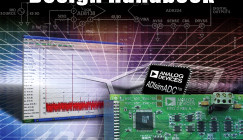Analog Galore in Linear Circuit Handbook

The Linear Circuit Design Handbook written and compiled by Analog Devices engineers can be described as a universal reference for various types of analog circuits. Besides the design and operation of opamps the book also presents a variety of applications including buffers, instrumentation amplifiers, logarithmic amplifiers, comparators, audio amplifiers and others. It also looks at the use of various types of sensors. This stimulating handbook is now available in the Elektor Store!
Many younger electronic engineers nowadays have difficulty designing linear circuits, which also go by the name of analog circuits. The subject today gets poor coverage in electronics studies, as almost everyone is working on digital designing and programming. Nonetheless, knowledge of linear (analog) technologies is indispensable.
The Linear Circuit Design Handbook written and compiled by Analog Devices engineers can be described as a universal reference for various types of analog circuits. Besides the design and operation of opamps the book also presents a variety of applications including buffers, instrumentation amplifiers, logarithmic amplifiers, comparators, audio amplifiers and others. It also looks at the use of various types of sensors.
It then switches to RF circuits, such as mixers, modulators, power detectors and phase-locked loops. Sampling is then explored looking at different types of converters as well as related issues such as voltage references and sample-and-hold circuits. A separate chapter is devoted to analog filters, and voltage regulators and passive components are explored. Finally, the key points in the design of a PCB for a linear circuit are reviewed in detail.
This stimulating handbook is now available in the Elektor Store!
The Linear Circuit Design Handbook written and compiled by Analog Devices engineers can be described as a universal reference for various types of analog circuits. Besides the design and operation of opamps the book also presents a variety of applications including buffers, instrumentation amplifiers, logarithmic amplifiers, comparators, audio amplifiers and others. It also looks at the use of various types of sensors.
It then switches to RF circuits, such as mixers, modulators, power detectors and phase-locked loops. Sampling is then explored looking at different types of converters as well as related issues such as voltage references and sample-and-hold circuits. A separate chapter is devoted to analog filters, and voltage regulators and passive components are explored. Finally, the key points in the design of a PCB for a linear circuit are reviewed in detail.
This stimulating handbook is now available in the Elektor Store!
